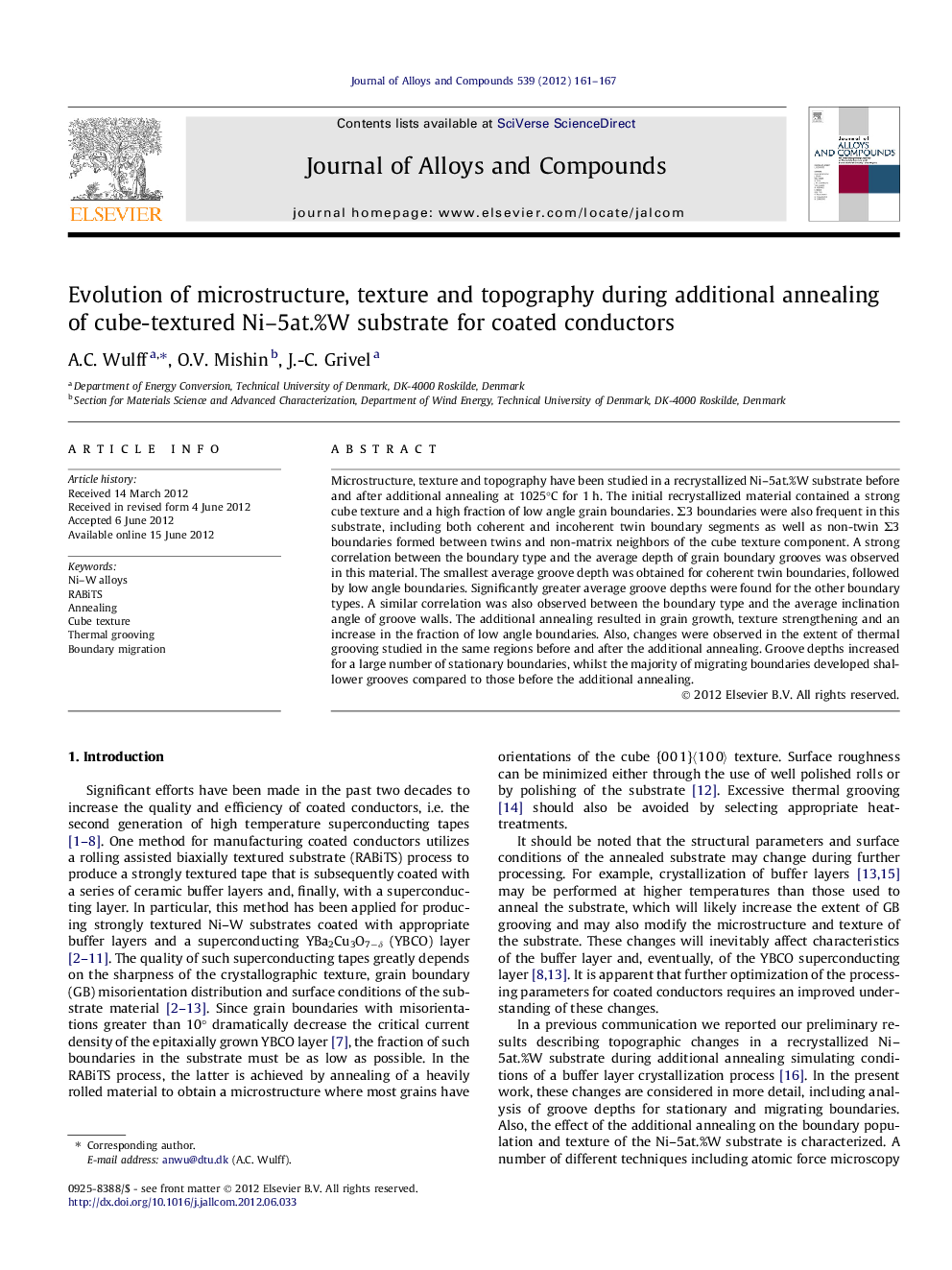| کد مقاله | کد نشریه | سال انتشار | مقاله انگلیسی | نسخه تمام متن |
|---|---|---|---|---|
| 1615713 | 1516354 | 2012 | 7 صفحه PDF | دانلود رایگان |

Microstructure, texture and topography have been studied in a recrystallized Ni–5at.%W substrate before and after additional annealing at 1025°C for 1 h. The initial recrystallized material contained a strong cube texture and a high fraction of low angle grain boundaries. Σ3 boundaries were also frequent in this substrate, including both coherent and incoherent twin boundary segments as well as non-twin Σ3 boundaries formed between twins and non-matrix neighbors of the cube texture component. A strong correlation between the boundary type and the average depth of grain boundary grooves was observed in this material. The smallest average groove depth was obtained for coherent twin boundaries, followed by low angle boundaries. Significantly greater average groove depths were found for the other boundary types. A similar correlation was also observed between the boundary type and the average inclination angle of groove walls. The additional annealing resulted in grain growth, texture strengthening and an increase in the fraction of low angle boundaries. Also, changes were observed in the extent of thermal grooving studied in the same regions before and after the additional annealing. Groove depths increased for a large number of stationary boundaries, whilst the majority of migrating boundaries developed shallower grooves compared to those before the additional annealing.
► Microstructure and topographic changes during additional annealing are monitored.
► Grain growth is accompanied by a reduction in the fraction of high angle boundaries.
► Most grooves at stationary grain boundaries become deeper.
► Grooves at migrating boundaries are typically shallower.
► The extent of grain boundary grooving depends on the boundary type.
Journal: Journal of Alloys and Compounds - Volume 539, 25 October 2012, Pages 161–167